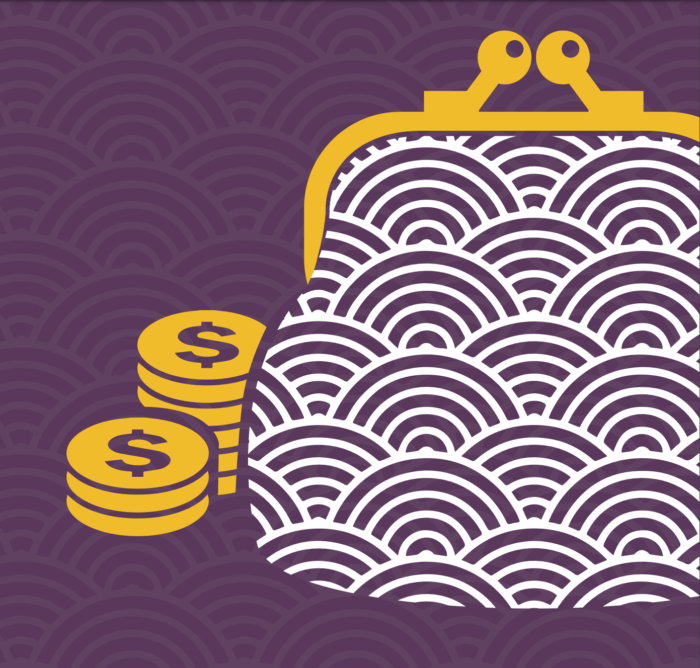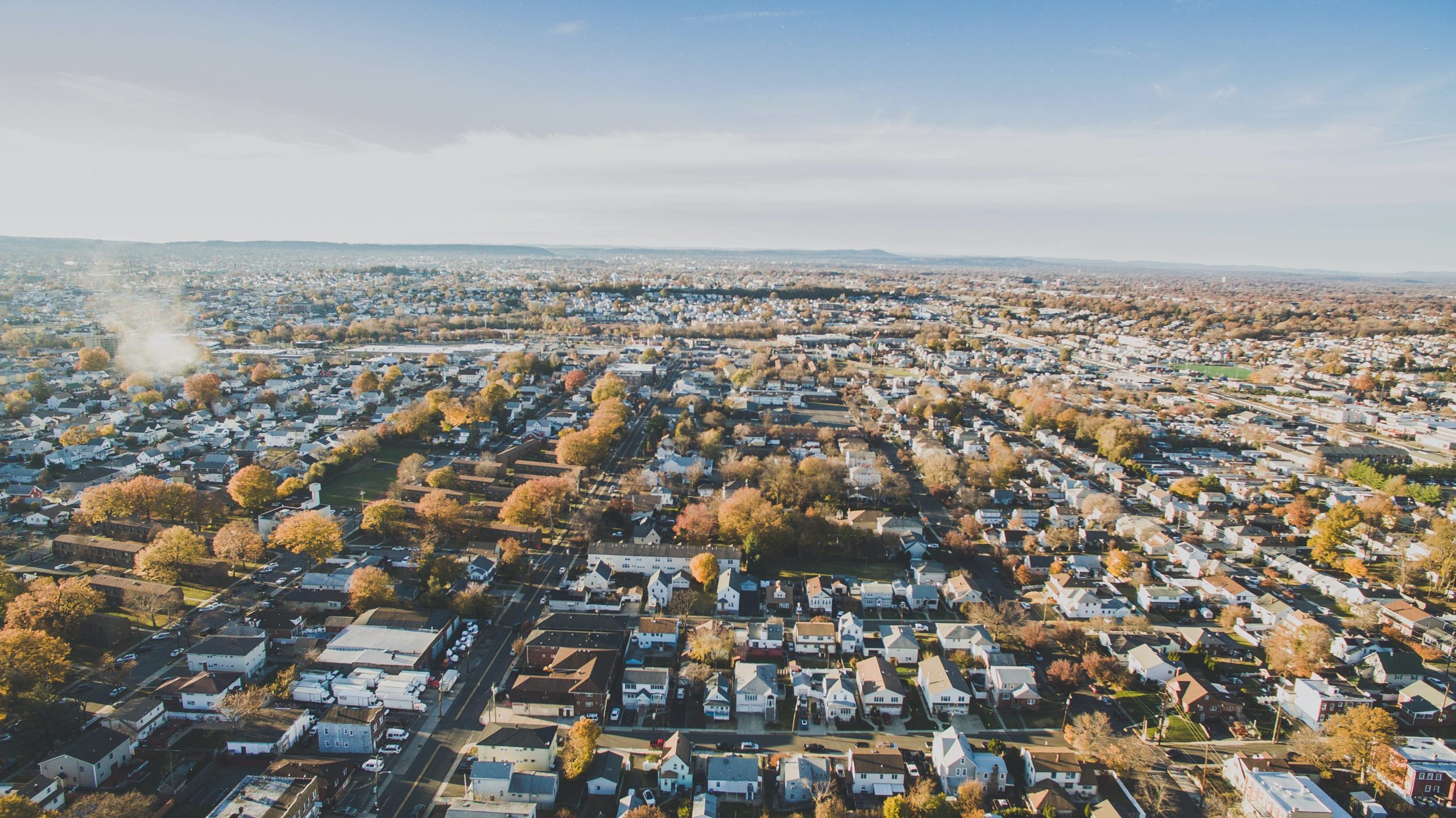Spotlight on Asian Americans and Pacific Islanders in the United States
Date: July 9, 2019

In recent years, much of the immigration debate in the United States has remained focused on Hispanic immigrants. But in fact, since 2010, new arrivals to the United States are more likely to come from Asia than from Latin America. To examine what this sea change in immigration means for the country, New American Economy (NAE) crunched the numbers to examine how Asian American and Pacific Islanders (AAPI) increasingly contribute to the U.S. economy. Using data from the 2017 American Community Survey, we find that Asian Americans and Pacific Islanders earned more than $744.8 billion in income and paid $218.6 billion in taxes. The data also show that they play critical roles not only as highly skilled workers in STEM fields and in healthcare, but also in the service and food industry as well.
Population Growth and Economic Clout
Every year since 2010, Asian immigration has outpaced Hispanic immigration. Almost 40 percent of the new immigrant arrivals in 2017 were Asian, compared to just 26.6 percent who were Hispanic. For comparison, just 12 years prior in 2005, half of all new immigrant arrivals were Hispanic.
Today, Asian Americans and Pacific Islanders have become the fastest growing minority group in the United States, outpacing Hispanic Americans. Between 2010 and 2017, the AAPI population grew from just under 18 million to more than 22.6 million, an increase of 25.7 percent. Meanwhile, Hispanic Americans grew by 16.0 percent over the same time period and the overall U.S. population increased by only 5.3 percent. AAPIs have gone from representing 5.8 percent of the U.S. population in 2010 to 6.9 percent in 2017.
Figure 1: AAPI Population, 2010 to 2017
| Population, 2010 | Population, 2017 | Growth Rate, 2010-2017 | |
| AAPI, Total | 17,983,511 | 22,613,591 | 25.7% |
| Foreign-Born AAPI | 10,348,915 | 12,735,690 | 23.1% |
| U.S.-born AAPI | 7,634,596 | 9,877,901 | 29.4% |
| Hispanic | 50,729,570 | 58,837,861 | 16.0% |
| U.S. Overall | 309,349,689 | 325,719,178 | 5.3% |
As an economic power, AAPIs are notable, in part because of their high average earnings. Our analysis shows that AAPI households, both U.S.- and foreign-born, have higher median incomes than many other comparable groups. In 2017, the median income of AAPI households was $80,100 in 2017, compared to $60,000 for the U.S. population as a whole.
AAPI immigrants have a similar story – they generally out-earn other immigrant groups. Immigrant AAPI households earned just more than $80,000 a year in 2017, compared to $51,900 for White immigrants, $50,700 for Black immigrants, and $49,100 for Hispanic immigrants.
Combined, Asian American and Pacific Islander households earned a staggering total of $744.8 billion in 2017, or more than the entire economies of Switzerland or Saudi Arabia ($679 billion and $688 billion, respectively). Given their earning power, the AAPI population consistently punches above its weight class as taxpayers as well. Although AAPI households made up only 5.6 percent of U.S. households, they paid 7.8 percent of all household tax contributions, or $218.6 billion, in the United States in 2017. Even after this, AAPI households had more than $526.2 billion left over to spend as consumers, homebuyers, and investors.
Figure 4: AAPI Income, Taxes, and Spending Power
| Total Income | Federal Taxes Paid | State and Local Taxes Paid | Spending Power | |
| AAPI Total | $744.8 B | $158.8 B | $59.7 B | $526.2 B |
| AAPI Share of U.S. Total | 7.4% | 8.1% | 7.3% | 7.3% |
When we look specifically at AAPI immigrant households, we find that the four largest country of origin groups—immigrants from India, China, the Philippines, and Vietnam—also had higher incomes, tax contributions, and spending power relative to their population size (See Figure 5). Importantly, this has some bearing on policy today, namely the Fairness for High-Skilled Immigrants Act of 2019. Data show that Asian immigrants, including Indian, Chinese, Filipino, and Vietnamese immigrants, are disproportionately and negatively affected by country caps that have resulted in immense backlogs in permanent residency applications. Of the nearly 400,000 green card applications that were in the backlog as of April 2018, over 95 percent hailed from these four countries. Immigrants from these countries that have been living and working in the United States on a temporary basis already contribute billions of dollars in taxes and additional consumer activity.
Figure 5: Population of Selected Country of Origin Groups, 2017
| Country of Origin | Population, 2017 | Share of AAPI Immigrants | Share of U.S. Population |
| India | 2,531,788 | 19.9% | 0.8% |
| China | 2,199,854 | 17.3% | 0.7% |
| Philippines | 1,968,184 | 15.5% | 0.6% |
| Vietnam | 1,352,695 | 10.6% | 0.4% |
Figure 6: Income, Taxes, and Spending Power of Selected AAPI Immigrant Groups, 2017
| Total Income | Federal Taxes | State and Local Taxes | Spending Power | |
| India | $162.6 B | $37.6 B | $12.4 B | $112.6 B |
| China | $116.9 B | $25.2 B | $9.6 B | $82.0 B |
| Philippines | $74.1 B | $14.6 B | $5.9 B | $53.5 B |
| Vietnam | $45.2 B | $8.4 B | $3.5 B | $33.2 B |
Asian Americans and Pacific Islanders as Entrepreneurs
Beyond powering the U.S. economy as consumers and taxpayers, hundreds of thousands of Asian American and Pacific Islanders own their own business. Together, these businesses employ millions of Americans.
In 2017, there were almost 1 million Asian American or Pacific Islander entrepreneurs in the United States—the vast majority of them born abroad. Moreover, Asian Americans and Pacific Islanders were more likely to be entrepreneurs than the U.S. population overall. While 9.5 percent of all workers in the United States owned their own business in 2017, 10.3 percent of Asian American and Pacific Islander workers did. This propensity for entrepreneurship is important considering that new businesses account for almost all the net job growth in America each year.
Given all this, it’s not surprising that Asian Americans and Pacific Islanders are also huge job creators. Based on the 2016 American Survey of Entrepreneurs, another dataset from the U.S. Census Bureau, we find that Asian entrepreneurs supported millions of jobs for American workers. In 2016, Asian-owned businesses employed more than 5.1 million workers in the United States, with 3.5 million working at an Asian immigrant-owned business.
Figure 7: Jobs Created by Asian American-Owned Businesses, by Nativity of Owner
| Number of Employees | |
|---|---|
| Foreign-Born Asian American Owned | 3,521,219 |
| U.S.-Born Asian American Owned | 1,614,961 |
| Total Asian American-Owned | 5,136,180 |
Asian Americans and Pacific Islanders in the Labor Force
Amidst historically low unemployment rates and worker shortages across the country, AAPI workers are uniquely equipped to meet critical workforce needs, filling important roles at both ends of the skill spectrum.
Most notably, Asian Americans and Pacific Islanders are highly concentrated at the high end of the skill spectrum. This is due to the fact that the AAPI population has some of the highest educational attainment rates in the country. More than half of the AAPI population aged 25 years or more held at least a bachelor’s degree in 2017, compared to 31 percent of the U.S. population in general. Within the AAPI population, AAPI immigrants were slightly more educated than their U.S.-born counterparts. Interestingly, recently arrived AAPI immigrants, those who arrived within the past five years, had even higher rates of educational attainment.
Among the largest four country of origin groups, we find even higher levels of educational attainment. Foreign-born workers from India, China, and the Philippines in particular are highly skilled, adding to their economic value as workers in hard to fill technical, scientific, or health-related jobs.
Figure 8: Educational Attainment of AAPI Population, by Nativity
| Educational Attainment | AAPI, U.S.-Born | AAPI, Foreign-Born | AAPI, Foreign-Born Recently Arrived | Total AAPI | U.S. Overall |
| Less than High School | 4.9% | 14.9% | 12.3% | 12.4% | 12.0% |
| High School and Some College | 44.2% | 32.8% | 23.6% | 35.7% | 56.0% |
| Bachelor's Degree | 32.1% | 28.7% | 34.3% | 29.5% | 19.7% |
| Advanced Degree | 18.8% | 23.6% | 29.8% | 22.4% | 12.3% |
Figure 9: Educational Attainment of Selected Groups, by Country of Origin
| Educational Attainment | India | China | Philippines | Vietnam | U.S. Overall |
| Less than High School | 7.0% | 21.2% | 7.3% | 29.9% | 12.0% |
| High School and Some College | 13.6% | 29.9% | 42.4% | 44.0% | 56.0% |
| Bachelor's Degree | 33.9% | 21.6% | 41.6% | 18.3% | 19.7% |
| Advanced Degree | 45.6% | 27.3% | 8.6% | 7.8% | 12.3% |
Among high-skilled AAPI workers, the most popular occupation was software developer, with 7.6 percent of the college-educated AAPI workforce holding this kind of job in 2017. This represented more than 457,000 college-educated AAPI software developers that made up a whopping 39.3 percent of all high-skilled workers in this occupation. But software developers are just one of the many science, technology, engineering, and math—or STEM—jobs that are expected to play a key role in America’s economic growth in the years ahead. In fact, the U.S. government forecasts that between 2016 and 2026, more than 1 million new STEM jobs will be created and that job demand in the STEM sector will grow 45.9 percent faster than the U.S. economy as a whole. High-skilled AAPI workers will undoubtedly help keep these positions filled, allowing U.S. companies to remain innovative and competitive in the future. In 2017, AAPI workers were more than twice as likely to be STEM workers than the overall population and recently arrived AAPI immigrant workers were more than four times as likely to be STEM workers.
AAPI workers were also 217 percent more likely than U.S. workers overall to work as physicians and surgeons, professions that is face critical shortages. In 2017, more than 1 in 5 physicians and surgeons were Asian American or Pacific Islander.
Figure 11: Top 10 Occupations for High-Skilled AAPI Workers
| Share of High-Skilled AAPI Workers | |
| Software developers, applications and systems software | 7.6% |
| Registered Nurses | 4.9% |
| Managers, misc. | 4.8% |
| Computer Scientists, Systems Analysts, Web Developers | 4.0% |
| Accountants and Auditors | 3.8% |
| Postsecondary Teachers | 3.6% |
| Physicians and Surgeons | 3.5% |
| Supervisors of Sales Workers | 2.4% |
| Elementary and Middle School Teachers | 2.1% |
| Engineers, misc. | 1.6% |
However, AAPI workers also make significant contributions in more labor-intensive industries that do not require a college degree, like many of those in personal services or the food industry. In 2017, there were more than 190,000 lesser-skilled AAPI personal appearance workers—making up more than 61 percent of all personal appearance workers in the United States. Meanwhile, more than 225,000 AAPI workers without a college degree made up 8.5 percent of all chefs and cooks while 9.4 percent, or almost 119,000, of all personal care aides were Asian American or Pacific Islander.
Figure 12: Top 10 Occupations for Less-Skilled AAPI Workers
| Total Number of AAPI Workers | Share of Overall Workforce | |
| Cashiers | 231,395 | 7.5% |
| Chefs and Cooks | 225,304 | 8.5% |
| Personal Appearance Workers | 190,669 | 61.4% |
| Retail Salespersons | 163,642 | 6.1% |
| Supervisors of Sales Workers | 158,686 | 5.1% |
| Waiters and Waitresses | 151,154 | 7.6% |
| Personal Care Aides | 118,884 | 9.4% |
| Customer Service Representatives | 102,033 | 4.6% |
| Janitors and Building Cleaners | 101,122 | 4.1% |
| Nursing, Psychiatric, and Home Health Aides | 91,554 | 4.9% |
AAPI Contributions by State
We also examined the important contributions that AAPI households are making to state economies as earners, taxpayers, and consumers. In California, the state with the largest AAPI population, AAPI households earned $244.3 billion dollars and paid $19.6 billion in state and local taxes in 2017, or more than one out of every six dollars in state and local taxes paid by Californians.
Figure 13: Top Ten States for AAPI Residents
| State | Population | Income | Federal Taxes | State and Local Taxes | Spending Power |
| California | 6,885,339 | $244.3 B | $53.3 B | $19.6 B | $171.4 B |
| New York | 1,945,521 | $61.6 B | $13.3 B | $6.7 B | $41.7 B |
| Texas | 1,611,080 | $53.2 B | $11.2 B | $3.3 B | $38.7 B |
| Hawaii | 993,444 | $26.8 B | $5.2 B | $2.6 B | $19.0 B |
| New Jersey | 975,537 | $42.0 B | $9.5 B | $3.6 B | $28.9 B |
| Washington | 877,690 | $30.8 B | $6.6 B | $2.2 B | $22.0 B |
| Illinois | 822,058 | $28.9 B | $6.2 B | $2.5 B | $20.1 B |
| Florida | 763,626 | $22.8 B | $4.8 B | $1.3 B | $16.7 B |
| Virginia | 683,333 | $26.4 B | $5.8 B | $1.9 B | $18.7 B |
| Massachusetts | 522,149 | $19.4 B | $4.4 B | $1.5 B | $13.6 B |
These data points only scratch the surface of understanding
the increasingly important role that Asian Americans and Pacific Islanders play
in the United States. As the fastest growing minority group in the country, the
AAPI community will become increasingly important for communities and states
all over the country as workers, consumers, and taxpayers. The success of Asian
Americans and Pacific Islanders, and especially AAPI immigrants, is clear.
Their impressive economic contributions show why smart immigration policies— ones
that allows the best and the brightest to study, stay, and work in the United
States—is critical to ensuring America remains dynamic and competitive in the
decades to come.






